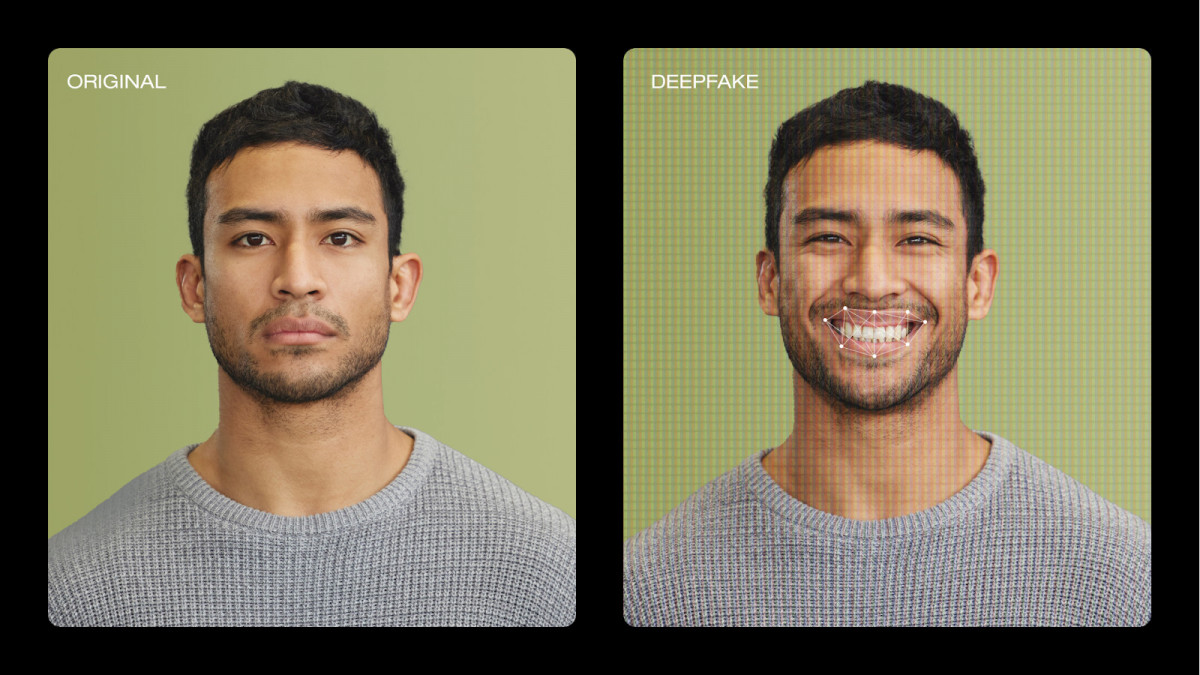The Dark Side of Deepfakes: How Malicious Actors Use Synthetic Media to Manipulate and Deceive


In Brief
Deepfakes, a technology that allows for the creation of lifelike representations of faces, voices, and other features, can be beneficial for art, entertainment, and education.
What is a Deepfake?
The term “deepfake” is a technological process that creates very realistic synthetic media, usually in the form of sounds, photos, or videos, using artificial intelligence (AI), specifically deep learning algorithms and generative adversarial networks (GANs). Deepfakes are able to produce wholly new and frequently misleading information by manipulating or superimposing preexisting visual and audio content, thanks to the training of these algorithms on big datasets.
With the use of this technology, faces, voices, and other distinctive features may be seamlessly altered to create lifelike representations that can be difficult to discern from genuine material. Deepfakes are useful for art, entertainment, and education, but they also pose serious risks for disseminating false information, violating privacy, and maybe being used to discredit people.

Photo: Vimeo
With the growing popularity of deepfake technology, more platforms are emerging to create these altered videos and images. Below is a list of popular deepfake platforms, which demonstrate the range of this technology, from simple face-swapping in GIFs to advanced video manipulation, reflecting the versatility and potential uses of deepfakes.
FaceApp
Known for its facial transformation features, FaceApp allows users to apply various filters to change their appearances, such as ageing or gender-swapping, offering a user-friendly interface.
ZAO
A Chinese deepfake app that gained attention for its ability to replace faces in video clips quickly and with high accuracy. ZAO provides users with simple tools to create personalised deepfakes.
Reface
A mobile app designed to swap faces in short video clips and GIFs. Reface offers a wide range of content, including popular movie scenes and celebrity images, making it easy to create entertaining content.
DeepFaceLab
A more advanced platform for creating deepfakes, DeepFaceLab is open-source and designed for experienced users who want to create complex deepfake projects. It allows for detailed manipulation of faces in videos.
Wombo
Specialising in lip-syncing, Wombo enables users to create videos where faces are animated to sing or speak. This platform is widely used for creating humorous and entertaining content.
Deepfakes Web
A web-based service, Deepfakes Web is designed for ease of use. Users can upload videos and images to generate deepfake content without needing advanced technical skills.
Deepfake Studio
A comprehensive platform for creating deepfake videos, Deepfake Studio offers a variety of tools for face swapping and manipulating video content. It caters to both beginners and more experienced users.
Do Deepfakes Pose a Risk?
Indeed, it is quite easy to obtain the technology needed to generate deepfakes, and there is a great chance that it will be abused for misinformation, political disinformation, social media imitation, and criminality. Threat actors and other criminal people may use this untrue material, among other things, to fabricate stories, threaten people, or pose as well-known people in order to commit fraud or harm people’s reputations.
The Practical Cases of Malicious Deepfakes
Tom Cruise Deepfake
Deepfake videos of Tom Cruise on TikTok are among the most well-known and captivating instances of media produced artificially. Millions of people watched these videos, which have Cruise’s visage precisely placed on another person’s physique to create disturbingly lifelike content.
Obama’s PSA with Jordan Peele
Director and comedian Jordan Peele collaborated with BuzzFeed to produce a video in which he voiced former President Barack Obama. The deepfake highlighted the possible risks in the political sphere by demonstrating how simple it was to produce false material using artificial media.
Mark Zuckerberg Deepfake as Social Commentary
The video of Facebook CEO Mark Zuckerberg was made by artist Bill Posters to demonstrate how easily social media can be exploited. In the deepfake, Zuckerberg talked about Facebook’s ownership of user data, drawing attention to the dispute over the company’s management of misleading material.
Crypto Scams
Deepfakes are also being widely used in the crypto space. For example, on February 7, 2024, CertiKSkynetAlert Twitter page posted an alert about a scam with the deepfake of Vitalik Buterin:
Are There Any Ways to Stop the Usage of Deepfakes?
Technologies that can identify deepfakes or allow for the verification of real material can be used to counteract malicious deepfakes. Fake media can be recognised by detection technology without requiring comparison to the original, unaltered material. Machine learning is a type of AI that is frequently used by these technologies. Data from reputable actual and fraudulent media sources is used to train the algorithms. Among the techniques are face or voice irregularities, signs of the deepfake creation process, and variations in colour.
Disclaimer
In line with the Trust Project guidelines, please note that the information provided on this page is not intended to be and should not be interpreted as legal, tax, investment, financial, or any other form of advice. It is important to only invest what you can afford to lose and to seek independent financial advice if you have any doubts. For further information, we suggest referring to the terms and conditions as well as the help and support pages provided by the issuer or advertiser. MetaversePost is committed to accurate, unbiased reporting, but market conditions are subject to change without notice.
About The Author
Victoria is a writer on a variety of technology topics including Web3.0, AI and cryptocurrencies. Her extensive experience allows her to write insightful articles for the wider audience.
More articles

Victoria is a writer on a variety of technology topics including Web3.0, AI and cryptocurrencies. Her extensive experience allows her to write insightful articles for the wider audience.

















































